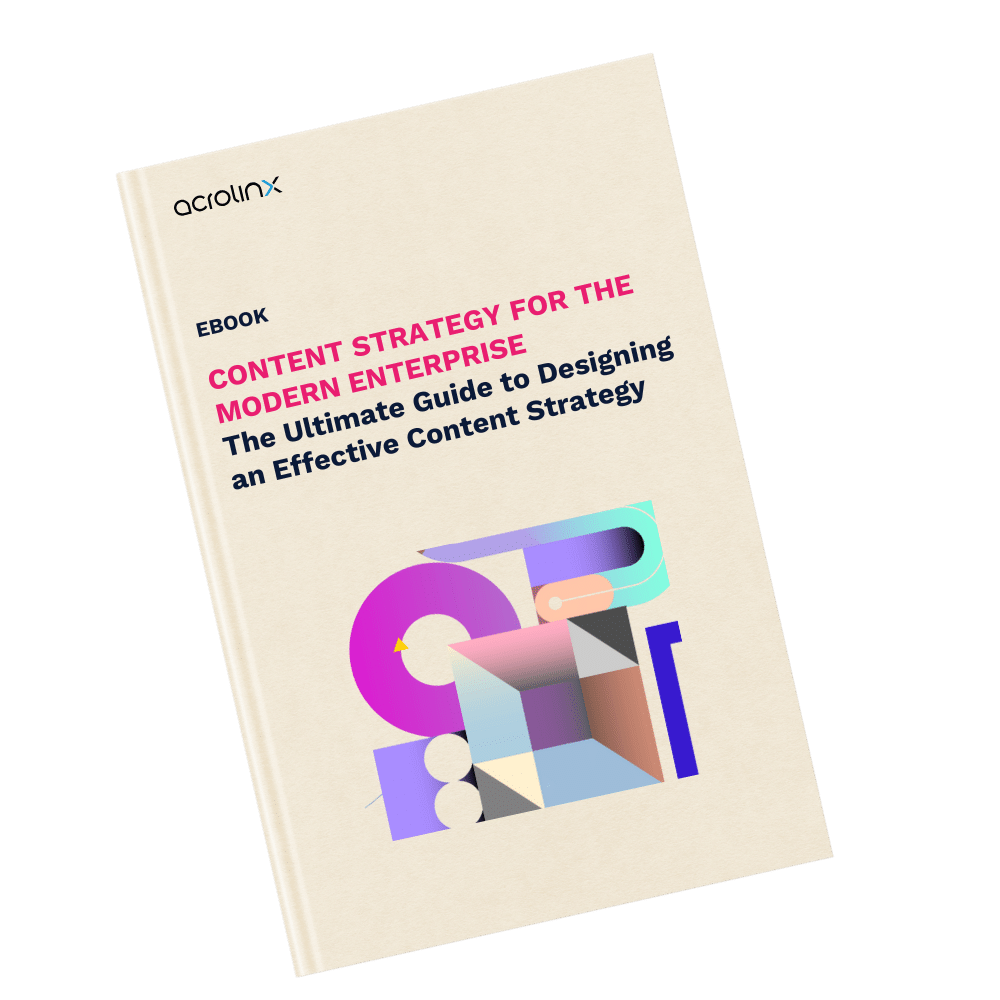How to Build Greater Synergy Between Content Creation & SEO

When it comes to optimizing content for search engines, marketers usually fall into one of two SEO camps. One camp focuses so heavily on keywords and how they rank, that it’s the only way they measure if content is successful. By now, we know it’s possible to be so “data-driven” in marketing that the customer experience becomes a secondary consideration. The other (aka most of us) don’t use enough keyword research to produce better performing content. It doesn’t matter which camp you’re in — both of these content marketing types have something in common. And that’s the fact that content creation and search engine optimization usually happen independently of each other.
Usually, in-house or agency Digital Marketing writers will craft a piece of marketing content. The very nature of marketing content is that it revolves around performance objectives. If it doesn’t attract, engage, convert — it’s not doing its job. Which is why when it’s created, an enterprise uses an SEO tool like SEMRush, BrightEdge, Searchmetrics, or Moz, (just to name a few) to track the performance of keywords.
Better Align Content to your Customers’ Journey
But so long as content creation doesn’t weave search data and story together from the beginning, companies miss out on the opportunity to better align their content creation with their business goals, and the customer journey.
And when organizations rely on keyword reporting on a domain/subdomain level, or only focus on “on-page” SEO optimization, they miss an opportunity to go beyond a limited data set to judge the effectiveness of content. The goal is to go beyond search, and understand content consumption metrics from the perspective of demand. Armed with that information, you can instead create content your audience wants to read, that also ranks well long term.
So let’s dive right in, and show how SEO research can inform topic ideation, so you can appeal to the search engines and your target audience.
The New Future of SEO Content Development is Here
Holistic content creation across the enterprise dissolves the typical silos across global teams and departments. Does your technical communication remember to talk about the value of that new feature, or is it purely factual? Does your marketing content anticipate the questions your customers may ask, or is that still up to support? Holistically created content considers that every content piece you publish is part of the customer experience, and no matter which team you publish content within, you need to balance the customer concerns that were typically managed within individual departments across the enterprise.
By unifying the SEO and content creation process, it’s possible to publish digital marketing content that your customer likes and shares, while meeting your KPIs. Great search results doesn’t necessarily mean engaging content. Search engines also reward holistically created, well written, well-structured content over digital marketing content that tries to simply outsmart the search results from your competitors.
When you consider how findability impacts traffic and scannability impacts conversion, you’ll start to draft your content differently. We’ll go into more detail, but an overview of the benefits of bringing SEO and content creation together include the ability to:
- Benchmark content against that of your competitors to establish “share of voice” in terms of search engine rankings.
- Craft content that better aligns to the customer journey.
- Learn how to optimize for a cluster of keywords that let you communicate more naturally.
- Write content that ranks for more than one keyword so that it ranks better.
And for your content, you can:
- Come up with content topics that are researched according to the monthly search volume of keywords.
- Write marketing content that performs well in search engines but avoids keyword stuffing.
- Perform search engine optimization without compromising the readability, clarity, and consistency of your content.
- Write to improve the effectiveness of your defined KPIs, whether that’s activity, read through rates, number of shares, or conversion rate — and that’s even before the keywords come in.
SEO Writing Starts with the First Draft
Writing the first draft of your content — with the SEO basics already in place — is the key to writing read-worthy content that boosts organic traffic for specific topics. Too often, topic ideation for new content is independent from the keywords you eventually want to include. And if your content creators choose a topic whose potential keywords end up having a low monthly search volume, you’re not using topic ideation strategically enough. It’s time to bring search engine optimization into the early stages of content development and use it to inform which topics are worth writing about!
If you’re still using one keyword with a high monthly search volume, or leaving content optimization until after you’ve written your content, here’s how you can start thinking about search optimization at the planning and creation stage.
- Do your keyword research before you start content creation and choose more than one keyword to optimise your content for.
The value of a top-ranking piece of content that can generate the equivalent amount of traffic without spending money with Google AdWords is $1.209 per month for a single keyword. Imagine what you could achieve if one piece of content ranked for more than 100 keywords?
You can support your content writers by finding one keyword that has a decent monthly search volume, and then adding other relevant keywords that have a semantic proximity to your main term. This gives content writers a way to talk about your topic without sounding too repetitive. Not knowing the related keywords limits the revenue potential of your content performance and value.
Depending on which tool you’re using to research your keywords and topics, you’ll know that the semantic proximity of different keywords is defined by the user, so by covering more than one keyword you’re also covering more than one way your audience will search for that particular topic. It also means you’re increasing the chances that they’ll find your content.
- Choose a competitive topic using a topic cluster of keywords.
Writing with keyword clusters has enormous potential impact on the success of the topic you choose to write about. You and your competitors might all be writing about the best chocolate chip cookie recipe, but if you’re optimizing for an entire cluster, you’re increasing your organic traffic more than an article that uses just one or two keywords. This approach helps you use search complexity to stand out from the crowd!
One word on topic clusters: Just because the cluster has a bunch of sound keywords with decent monthly search volumes doesn’t always mean it’s foolproof. You should also consider:
- Does this cluster fit the industry we’re in?
- Is the interest in this topic still growing?
- Do we already have authority over the topics that relate to this cluster?
Our friends over at Velocity Partners wrote a great blog that also talks about how it’s not a search marketers sole reason to research ideas for content writers, but how it kinda should be. If you like this blog on integrating SEO and content creation, we think you’d also like theirs.
- Know how to align content to the customer journey
To align content to the customer journey, it also helps to know which keywords belong to searches for information, and which are more “transactional” terms. Depending on your goals for a particular content piece, you’ll need to know if the words you’re using match the purpose of your content. An example of an informative blog post is one that talks about the “Best SUV for families.” But, if you’re googling for an “Audi Q5,” search engines will point you towards more transactional content.
For a more detailed approach to aligning content creation to the customer journey, you should definitely check out our latest eBook. It’s all about using data early on in the content creation process to start creating content based on demand. And how bringing those insights to the point of content creation turns your enterprise content into a competitive differentiator.
- Write a statement of intent to distill the message you’re trying to communicate.
Before you start writing, it’s a good idea to write a statement of intent at the top of the document you’re working in. Even if you’re an experienced writer, this helps you stay on topic and keep unrelated ideas from popping up in your content. For example, one possible statement of intent for this blog topic could be:
Most marketing teams separate the content creation and SEO optimization process. And they’re not using enough data to write better ranking content. By making SEO part of the early content creation process, you can reap the benefits of increased traffic and conversion from more findable and scannable content — without keyword stuffing.
- Use content governance with an integrated findability or scannability feature to make sure the right people are finding your content.
If you’re using an AI-powered content improvement platform with an integration for an SEO optimization tool, you’re well on your way to bridging the gap between content creation and search optimization. If you’re not, you’re not able to improve the findability of your content early enough in the lifecycle to get the ultimate value out of the content you’re publishing.
Clarity, ease of readability, and consistency all make content a pleasure to read. It’s important to keep SEO content performing to your content standards. That’s how you’ll know that you’re not compromising on engaging content for the sake of well-ranking content. It’s one thing to be able to find your content, but to keep your audience engaged, it’s time to marry content metrics around search optimization with metrics around how concise and lively your writing is, and how scannable it is. Because at the end of the day, it’s not just what you say that captivates your audience — it’s also how you say it.
Scannability & Findability with Acrolinx
Acrolinx helps your content get through the content optimization stage faster, with the Findability feature. With the Findability dashboard, you can view the keywords Acrolinx found in your content. You can see which keywords you’re using and how often, and start optimizing for your chosen keywords while you’re writing.
And because content that has a clear structure has a positive effect on the ranking, Acrolinx can soon help you write well-structured texts that you can easily scan to read. It works by giving you a number of paragraphs, the average number of words per paragraph, and helps you break up dense blocks of text. Well-structured web content has lower bounce rates and higher chances to receive social media attention, which also leads to higher rankings.
So what are you waiting for? Download our new guide Where Does Customer Experience Begin? and start integrating content metrics into your content creation now!
Are you ready to create more content faster?
Schedule a demo to see how content governance and AI guardrails will drastically improve content quality, compliance, and efficiency.

Kiana Minkie
She comes to her content career from a science background and a love of storytelling. Committed to the power of intentional communication to create social change, Kiana has published a plethora of B2B content on the importance of inclusive language in the workplace. Kiana, along with the Acrolinx Marketing Team, won a Silver Stevie Award at the 18th Annual International Business Awards® for Marketing Department of the Year. She also started the Acrolinx Diversity and Inclusion committee, and is a driving force behind employee-driven inclusion efforts.





